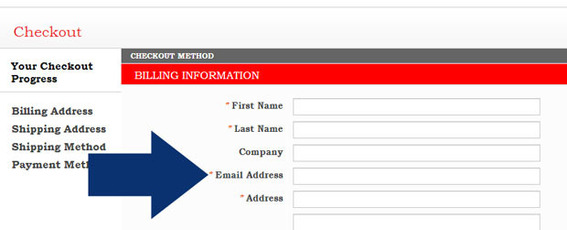An abandoned shopping cart is like a broken promise. For the merchant, there is a lost sale and unclaimed revenue. For the shopper, there is an unfulfilled need or want. Fortunately, a quick series of cart abandonment emails may renew that promise, helping both the customer and the retailer.
Roughly two out of every three (67.35 percent) ecommerce shopping carts are abandoned after consumers have selected items and placed those items in the cart, according to April 2013 data from the Baymard Institute, which averaged documented online shopping cart abandonment rates from 19 separate studies conducted in the last few years.
Shopping cart abandonment can happen for a number of reasons. Forrester Research, as an example, has consistently blamed shipping and handling costs. Imagine that a shopper finds the perfect $25 item, adds it to the cart, and learns that it will cost another $15 — more than half of the product’s price — just to ship. At other times, a shopper might have become distracted, or maybe the shopper just wanted to compare prices from other sites.
Automated, behavior-driven emails — often referred to as cart abandonment emails — have demonstrated an ability to reengage shoppers, save sales, and benefit both the shopper and the merchant. There are a number of ideas about what is the best way to use cart abandonment emails. What follows are thoughts about some of the key shopping cart abandonment best practices and how small or mid-sized merchants might apply them.
Collect Emails Early
For a shopping cart abandonment email series to be effective, you must have a valid email to send those messages to. If there’s no email, there is no chance to reclaim the lost sale.
Collect the email address early in the checkout process.
Make certain that one of the first, if not the first, questions that you ask a customer is for her email address. Also, you want to ensure that the email address is either automatically saved with the shopping cart or saved after the shopper submits the first step (often the contact information) in the checkout process. It is important to note that you will be creating a business relationship, if you will, with the customer. This will allow you to send transaction-related emails, like the cart abandonment emails, without sending spam.
Plan a Series of Emails
Many email experts recommend a series of shopping cart abandonment emails with about two or three emails sent at scheduled intervals.
The first email that you send might ask the shopper if he needs any help completing the transaction. Perhaps, there was a technical issue, or maybe he wasn’t certain about the proper size. As an example, Cooking.com’s shopping cart abandonment email says, “If you had trouble checking out or found something confusing, please contact our customer service department by email at support@cooking.com or by phone…”
The second email in the series might simply inform the shopper that you are “holding” her items. It might even make sense to add a deadline. Here are a couple of examples.
“We have saved your selected items, but remember many of our popular and limited-edition styles sell out quickly. Please place your order soon.”
“Have you met Dash the Dog? He keeps the Zappos.com site running smoothly so our customers can shop with ease! Dash has been looking after the items you left in your shopping cart. While Dash doesn’t mind watching your order, he wants you to know that your items have been asking for you and would like for you to return.”
Finally, for a third email consider making a follow up offer. Often this offer could include a discount or even free shipping, such as, “We were just about to put away the items you had in your shopping cart, but we thought we’d give you another chance to claim them. We are even going to include free two-day shipping if you order in the next four hours.”
Send Emails Soon
While conversion rates from successful shopping cart abandonment emails vary greatly, sending the first email in the series within 60 minutes of the cart abandonment can dramatically boost the recovery rate.
SaleCycle, as an example, reported in 2012 that merchants who sent the first shopping cart abandonment email within 20 minutes of when the shopper left the cart would enjoy about a 5.2 percent conversion rate while retailers that waited 24 hours to send the first cart abandonment follow up experienced about a 2.6 percent conversion rate.
Measure, Compare, Adapt
It is vital that online retail marketers continue to monitor, measure, and adjust a shopping cart abandonment email series. For example, the above data about when to send the first email in a series might not apply to online retailers selling large or expensive items.
The best practice is to monitor the cart abandonment campaign. Make small, distinct adjustments and compare the results. Does changing the subject line impact conversions? Does including pictures of the items in the abandoned cart help?
Test each change for a statistically significant audience and compare the results.


